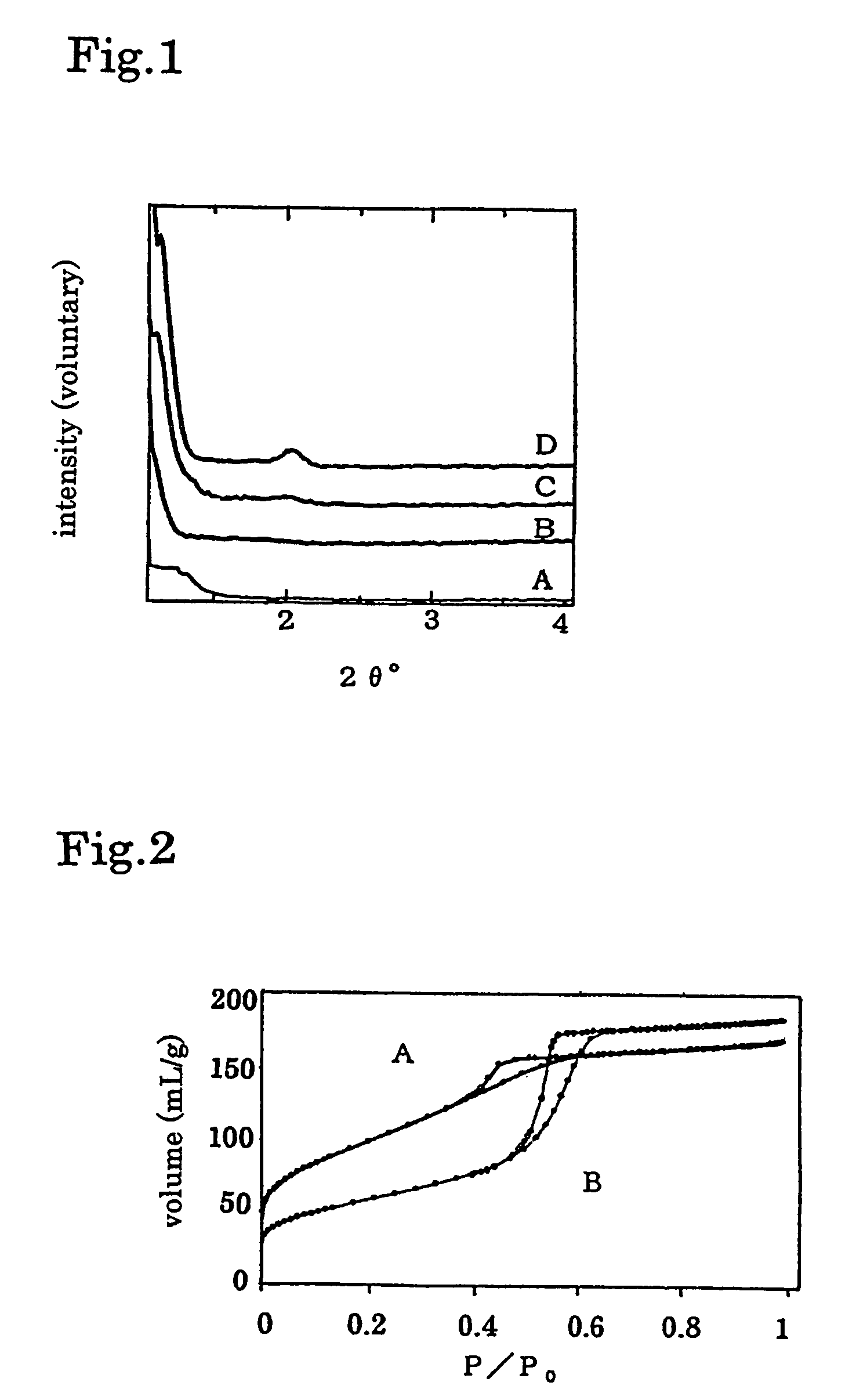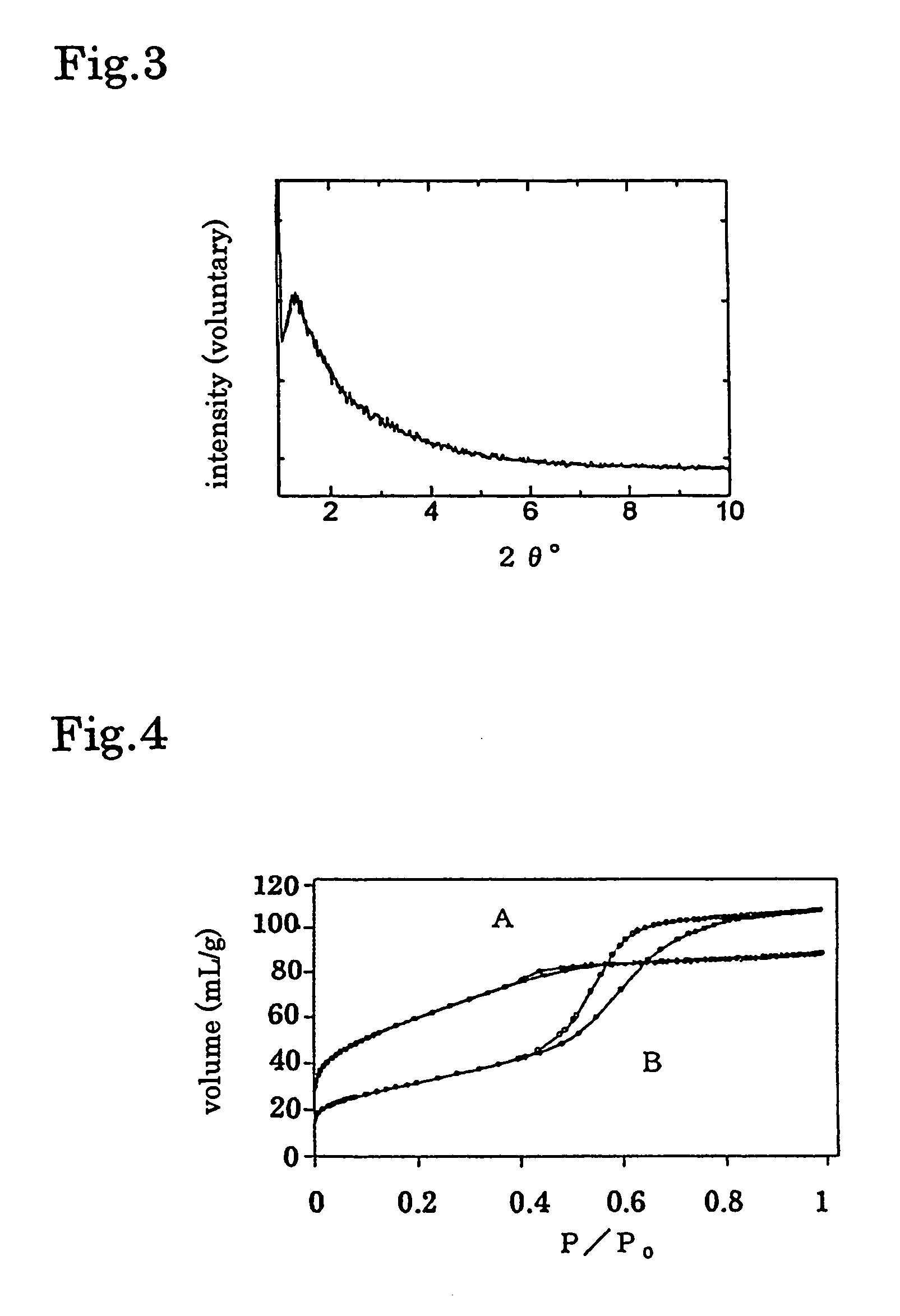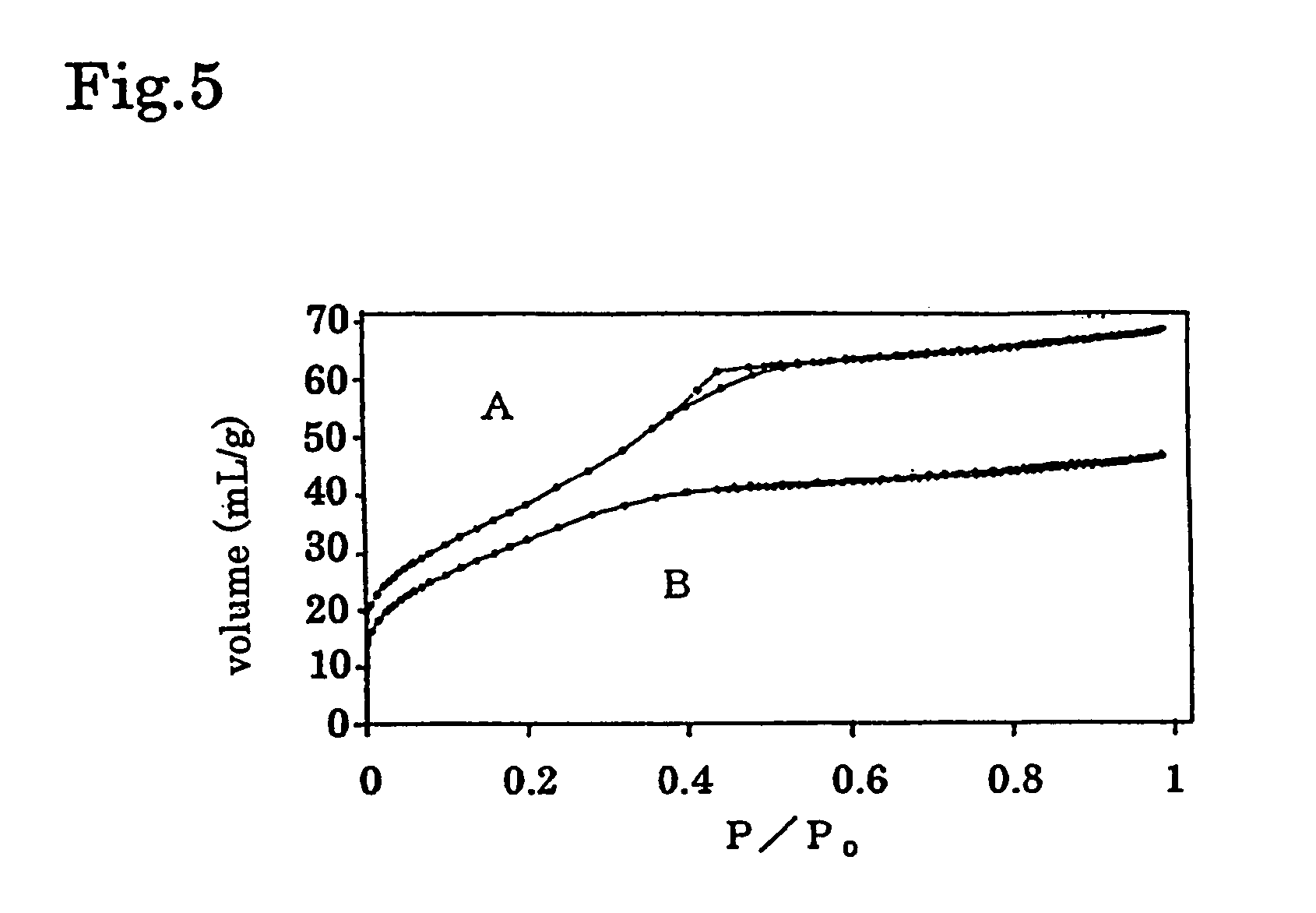Process for producing micro-mesoporous metal oxide having regulated pores formed by novel template removal method
a technology of micro-mesoporous metal oxide and template removal method, which is applied in the direction of alkali metal oxide/hydroxide, copper oxide/halide, copper oxide/halide, etc., can solve the problems of limited application, unstable, and difficult to generate shape recognizing functions
- Summary
- Abstract
- Description
- Claims
- Application Information
AI Technical Summary
Benefits of technology
Problems solved by technology
Method used
Image
Examples
example 1
[0031]10 wt % of ethanol solution of nonionic surfactant composed of polyethylene oxide chain (CH2 CH2O)m and polypropylene oxide chain [CH2CH(CH3)O]n (wherein, m and n is 10-70 and end of said polymer is etherized by H, alcohol or phenol) was prepared. 0.005-0.01 mole of niobium chloride was added to 10 g of said surfactant and stirred for 20-60 minutes and dissolved. At said process, 0.5-2 mL of water containing 0.05M of alkali or alkali earth ion was added to accelerate hydrolysis of inorganic compound and self-assembling. The 1st step aging was carried out on obtained sol solution in air at 35° C. to 60° C. for 2-10 days and A of FIG. 1 was obtained. The 2nd step aging was carried out on the obtained gel to stabilize the structure at 60° C. (FIG. 2B), 80° C. (FIG. 2C) and 100° C. (FIG. 2D) for 12-48 hours. Obtained gel after 2nd step aging was washed with 0.1-1 L water per 1 g of said gel and filtrated, and said nonionic surfactant, which is the template, was removed. Sediment o...
example 2
[0041]Production of micro-mesoporous magnesium-tantalum oxide 0.003 mol of MgCl2 and 0.07 mol of TaCl5 were poured into 10 wt % of P-123 [Trade name, product of BASF: (HO(CH2CH2O)20(CH2CH(CH2)O)70(CH2CH2O)20)H] / propnol solution. After reacted for 30 minutes, aged at 40° C. for 2-10 days, then 2nd step aging was carried out at 100° C. for 24 hours. Template was removed by washing with water, and micro-mesoporous magnesium-tantalum oxide of 2 nm average pore size and 210 m2 / g specific surface area was obtained.
[0042]X-ray diffraction curve is shown in FIG. 3 and N2 gas adsorption isotherm curve is shown in FIG. 4. In FIG. 4, A is the micro-mesoporous magnesium-tantalum oxide produced by the process for producing of the micro-mesoporous composition of the present invention. While, B is the micro-mesoporous magnesium-tantalum oxide prepared by removing template by calcination, and the average pore size of this micro-mesoporous magnesium-tantalum oxide is 6 nm and BET specific surface ar...
example 3
[0043]Micro-Mesoporous Tantalum Oxide
[0044]0.07 mol of TaCl5 was poured into 10 wt % of P-123 [product name, product of BASF: (HO(CH2CH2O)20(CH2CH(CH2)O)70(CH2CH2O)20)H] / propanol solution. After reacted for 30 minutes, aged at 40° C. for 1 week, then 2nd step aging was carried out at 100° C. for 1 day. Template was removed by washing by 1 L of water, and micro-mesoporous tantalum oxide was obtained.
[0045]Average pore size of fine pore of the obtained micro-mesoporous tantalum oxide was 1 nm and surface area (BHT specific surface area) is 120 m2 / g. By the way, the average pore size of fine pore of the mesoporous tantalum oxide prepared by removing template by calcination is 3 nm.
[0046]In FIG. 5, N2 gas adsorption isotherm curve of the obtained micro-mesoporous tantalum oxide is shown.
PUM
| Property | Measurement | Unit |
|---|---|---|
| pore size | aaaaa | aaaaa |
| pore size | aaaaa | aaaaa |
| pore size | aaaaa | aaaaa |
Abstract
Description
Claims
Application Information
 Login to View More
Login to View More - R&D
- Intellectual Property
- Life Sciences
- Materials
- Tech Scout
- Unparalleled Data Quality
- Higher Quality Content
- 60% Fewer Hallucinations
Browse by: Latest US Patents, China's latest patents, Technical Efficacy Thesaurus, Application Domain, Technology Topic, Popular Technical Reports.
© 2025 PatSnap. All rights reserved.Legal|Privacy policy|Modern Slavery Act Transparency Statement|Sitemap|About US| Contact US: help@patsnap.com



